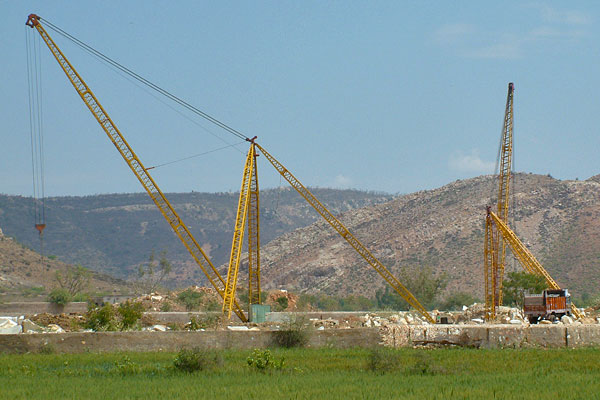
The Ministry of Environment and Forests (MoEF) has come out with new guidelines to create eco-sensitive zones (ESZs) around Protected Areas to prevent ecological damage caused due to developmental activities around National Parks and Wildlife Sanctuaries.
The new ESZ guidelines, declared by the ministry on February 9, 2011 would also ensure that these areas act as “shock absorbers” to the protected areas by regulating and managing the activities around such areas. The guidelines were updated on the ministry website today. “It is prerequisite that an inventory of different land-use patterns and the different types of activities, types and number of industries operating around each of the protected areas be made,” the ministry said.
“The basic aim is to regulate certain activities around National Parks and Wildlife Sanctuaries so as to minimise the negative impacts of such activities on the fragile ecosystem encompassing the protected areas,” the Ministry said in its new guidelines.
The guidelines include a broad list of activities that could be allowed, promoted, regulated or promoted. This is an important checklist for conservationists to keep in mind while identifying threats in ESZs.
For this purpose, the ministry has asked all states to constitute a committee comprising the wildlife warden, an ecologist and a revenue department official of the area concerned to suggest the requirement of an eco-sensitive zone and its extent.
The panel could also suggest the best methods to manage such zones and broad-based thematic activities to be included in the master plan for the areas, which have been classified as prohibited, restricted with safeguards and permissible. The guidelines said activities, including commercial mining, setting of saw mills and industries causing pollution, commercial use of firewood and major hydro-power projects, are prohibited in such areas.
It also prohibits tourism activities like flying over protected areas in an aircraft or hot air balloon, and discharge of effluents and solid waste in natural water bodies or terrestrial areas.
Felling of trees, drastic change in agriculture systems and commercial use of natural water resources, including groundwater harvesting and setting up of hotels and resorts, are the activities regulated in the areas.
Activities permitted in the areas include ongoing agriculture and horticulture practices by local communities, rainwater harvesting, organic farming, adoption of green technology and use of renewable energy sources.
The width of the ESZ and type of regulation may vary from protected area to area. However, as a general principle, the width of the ESZ could go up to 10 kms around the protected area. The ministry said all states and union territories were asked to forward site-specific proposals to set up ESZs. But only few states have forwarded the proposals. “This ministry after careful consideration, has therefore, decided to frame guidelines to facilitate the state/union territory for declaration of eco-sensitive zones around national parks and wild life sanctuaries.”
Click here to download the entire document from the MOEF website.

 CI is a non-profit, non-commercial portal that aims to facilitate wildlife and nature conservation by providing reliable information and the tools needed to campaign effectively.
CI is a non-profit, non-commercial portal that aims to facilitate wildlife and nature conservation by providing reliable information and the tools needed to campaign effectively.